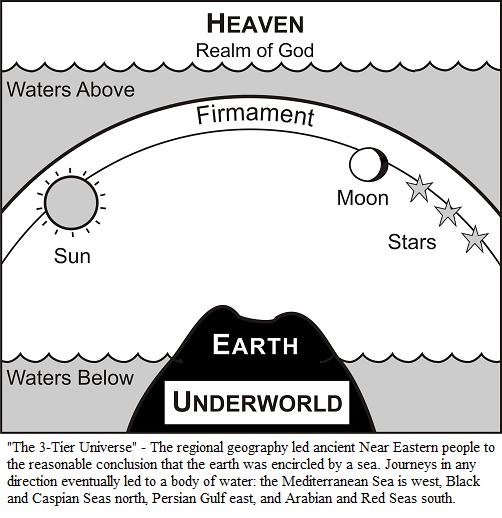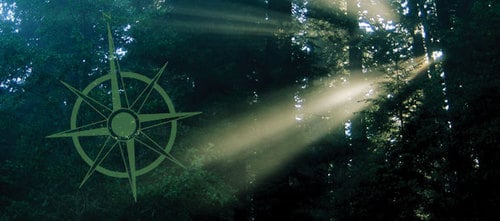
Every Monday, “Science and the Sacred” features an essay from one of The BioLogos Foundation’s co-presidents: Karl Giberson and Darrel Falk. Today’s entry was written by Darrel Falk.
Someone needs to write a book about the emergence of evolutionary biology as a subject for public discourse beginning in the late 1980s and early 1990s. This was the period when Stephen Jay Gould’s books were at their zenith. Gould outlined what he considered to be limitations of the theory of natural selection. Through his great story-telling ability and brilliant writing skills, Gould made his particular view of evolutionary theory come alive. No scientist since Darwin had so successfully engaged the public in evolutionary theory. In his book, Wonderful Life, Gould proposed in an especially poignant manner that vertebrates like us are here not just because of the force of natural selection. He suggested that luck–pure unadulterated luck–was at least as important to our arrival on earth as was natural selection itself. It was also Gould who brought the Cambrian Explosion to the attention of the public, and it was Gould who caused people to become aware that after more than 150 years of searching the rocks, paleontologists had found only a very limited number of transitional species.
This was also the period when the Australian molecular biologist Michael Denton wrote the book Evolution: A Theory in Crisis. Denton went further than Gould. Gould wanted to put contingency alongside of natural selection as the driving force of evolution. Denton, also an agnostic, believed evolutionary theory was so fundamentally flawed it needed a complete overhaul.
Michael Behe was just a couple of years into his appointment as an Associate Professor at Lehigh University when he read Denton’s book. He read it in two days and, in a recent summary
of those days, he states that his serene assumptions about natural selection were shattered forever: “When I laid the book down, I lived in a different world.”
We are all trained as scientists to find flaws in other scientists’ interpretation of the data. Usually, this is restricted to tiny details that only a handful of other scientists care about. Still, there is nothing that energizes a scientist more than to identify a significant flaw that has been missed by others. It makes for excited conversation at coffee time. Imagine, then, the exhilaration when Behe became convinced that that the most important theory biology had ever produced was deeply flawed. His world would, indeed, never be the same again.
It wasn’t just Behe and Denton. Because of the writings of Gould, the pump was primed like never before. Gould’s writings had prepared the academically engaged evangelical Christian. Furthermore, creation science had just failed in the Supreme Court of the United States. Creation science was religion, not science, the Court declared. The time was ripe for a new approach to demonstrate the scientific credibility of creation for the millions who believed in a creator. When Science printed a quote that advised scientists to protect others from becoming confused by Phillip Johnson, author of the just-published Darwin on Trial, Michael Behe spoke for many when, in 1991, he rebuked the scientific community:
The theory of evolution by natural selection is not a difficult concept to grasp, and Charles Darwin addressed The Origin of Species itself to a general audience. But neither is it self-evident to many people that natural selection can fully account for the world they observe. Thus when questions about the theory arise in public forums, the scientific community would do much better in the long run to patiently list supporting facts and frankly admit where positive evidence is lacking, rather than paternalistically maintaining that an understanding of the theory of evolution is reserved for the priesthood of professional scientists.
Putting such thoughts in writing–taking on the scientific community from within–was a most unusual step for any young professor at a research university, but it was only a foretaste of all that was to come. Within a year, Behe resolved to “write a book explaining in detail for the public why modern biochemistry is not only resistant to Darwinian explanations but points strongly and insistently to intelligent design.”
Engagingly written with a clarity that rivaled Gould at his finest, this 1996 book
was a communication-masterpiece. However, Behe had taken a tact that was extremely risky. Key sub-disciplines of the biological sciences–cell biology and molecular evolution–were just coming into their heyday in 1996. Truly fascinating data was only beginning to surface. Many questions were being asked and imaginative techniques to obtain answers were emerging just as quickly. Behe decided to jump into this cauldron to say that some of the findings pointed to cellular structures and processes so complex that they could not possibly have arisen through the process of natural selection. He chose several examples: the bacterial flagellum, the blood clotting cascade, the eye, and the immune system. He declared that studies of the origin of all of these structures and processes were at scientific dead ends and would remain in that status. Indeed, Behe declared that their existence would never be explained except by invoking the input of an intelligent designer.
Some would say this was a foolhardy move when the structures and processes had only just been described and the science for investigating them was still being developed. The history of science has shown repeatedly that one does not just jump into a scientific problem when the field is in its heyday and declare it has reached a dead end. The just-posted FAQ on irreducible complexity at the BioLogos web-site provides a synopsis and a set of references which summarize the tremendous advances that have taken place in the past thirteen years. I’ll spend some time on this site in upcoming days writing further on the reduction of irreducible in complexity. For now, though check out the FAQ.
The status of the Cambrian explosion and transitional species is in a similar state of affairs and we have also addressed this in another FAQ.
So why did we Christians jump into a pot stirred up by the dilemmas posed by Stephen Jay Gould two decades ago? Why did we try to insert God only into the scientific unknowns?
- It seems that we wanted a God who worked in flurries of activity, only to rest for a while and then come back and work some more. I wonder why we expected a God of that sort.
- It seems we wanted a God whose activity we could point to, in order to prove beyond doubt that our own views about God and the universe are correct. I wonder what made us think that science would find the kind of God you could prove. Based on I Corinthians 2 for example, it is hardly scriptural.
- It seems we wanted a God who worked in a magical fashion. People have been seeing the hand of God working in mostly subtle ways for thousands of years. I wonder what made us think it would be any different now just because we have fancy scientific tools to try to find the magic.
There are extremely good reasons for believing in the God of Christian Scripture and for choosing to enter the life of Christian faith. Science provides wonderful hints that point to that God for those who choose to examine. Hints and proofs, however, are two very different things. Personally, I like living in a world composed of hints which are embedded in a world still full of mystery. C.S. Lewis calls them sign posts. Paul writes about seeing them through a glass darkly. I like the haze of a misty morning when the sun first starts to break through. It is all we have right now, but I am okay with that.
Darrel Falk is a biology professor at Point Loma Nazarene University in San Diego and co- president of The BioLogos Foundation.

